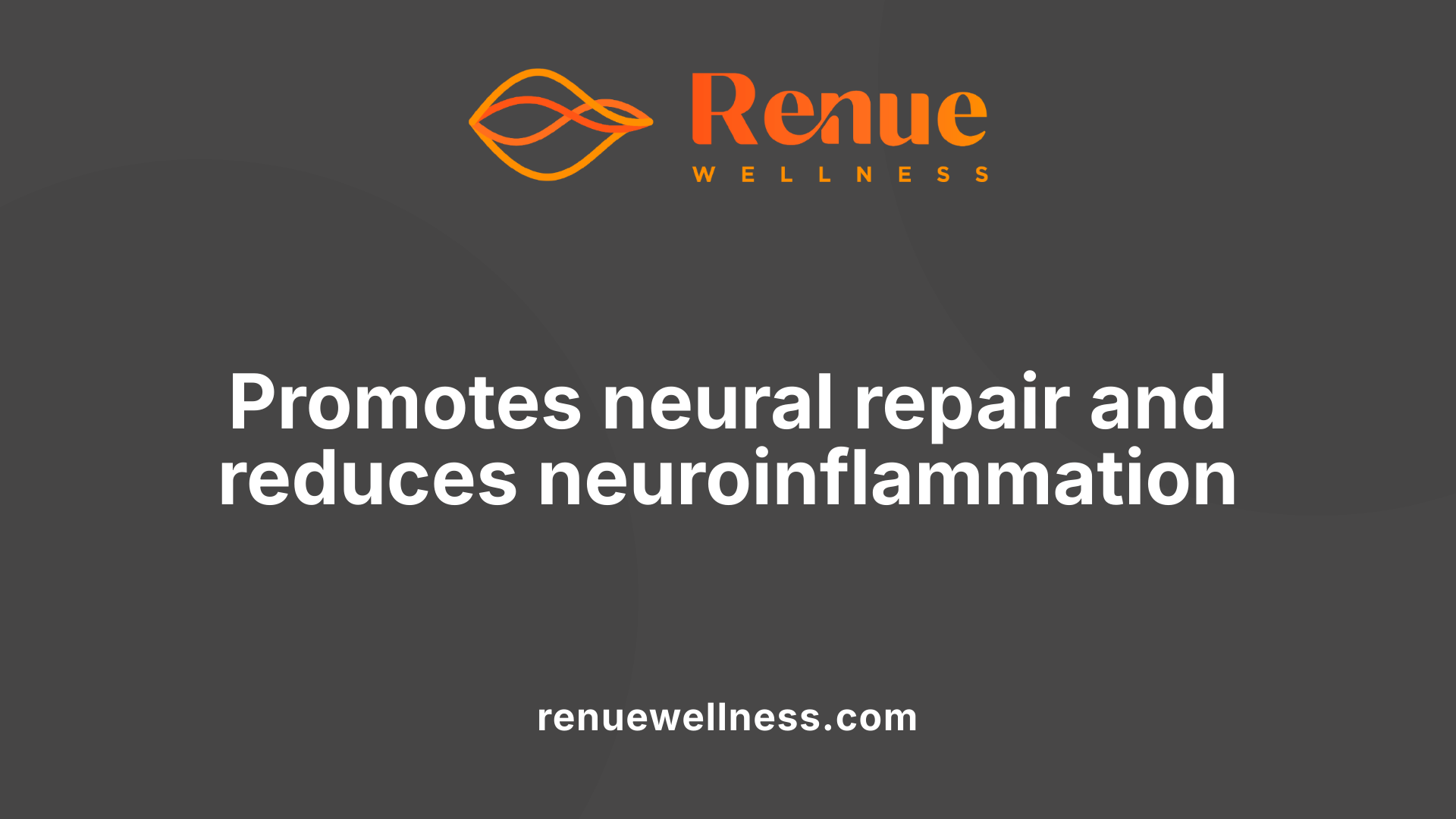From Psychiatry to Neurology: Where Ketamine Is Being Used


August 11, 2025
Exploring the Broad Spectrum of Ketamine Applications
Initially developed as a safe and effective anesthetic, ketamine has experienced a renaissance in contemporary medicine, demonstrating remarkable versatility across psychiatric and neurological domains. Its unique mechanism of action and neuroprotective properties have paved the way for innovative treatments targeting some of the most challenging conditions in mental health and neurology. This article explores the various applications of ketamine, highlighting the evolving landscape from its traditional roots to its emerging roles in neuropathology, mental health, and beyond.
Medical and Therapeutic Uses of Ketamine in Psychiatry

What are the medical and therapeutic uses of ketamine in psychiatry?
In psychiatry, ketamine is mainly recognized for its rapid action in alleviating severe depression, particularly in cases resistant to traditional treatments. Patients often experience mood improvements within hours, with effects that can last up to a week, especially after a single infusion. It is also highly effective in swiftly reducing suicidal thoughts, sometimes maintaining relief over several weeks with repeated doses.
The Food and Drug Administration (FDA) approved esketamine—a chemically similar nasal spray—specifically for treatment-resistant depression and depression complicated by acute suicidal ideation. Besides depression, ketamine is used off-label to manage post-traumatic stress disorder (PTSD), with research indicating significant reductions in symptoms and lower hospitalization rates. It also shows promise in treatment of anxiety disorders and substance use disorders such as alcohol and opioid dependence, by diminishing cravings and aiding abstinence.
Its administration occurs in controlled medical environments, typically involving supervised intravenous infusions, nasal sprays, or oral formulations. These treatments are part of comprehensive mental health care programs. Ongoing studies continue to explore ketamine’s potential benefits for bipolar disorder, OCD, and other psychiatric conditions, although FDA approval for these uses has yet to be established.
Neuroprotective and Anti-inflammatory Actions of Ketamine

How does ketamine influence neuroinflammatory pathways and neuroprotection?
Ketamine’s role extends beyond its anesthetic properties, showing promising neuroprotective and anti-inflammatory effects, especially in acute neurological conditions. It modulates neuroinflammatory pathways by influencing cytokine production, which reduces inflammation within the brain. This reduction in neuroinflammation helps decrease neuronal damage—a common feature in conditions such as stroke, traumatic brain injury (TBI), and neurodegenerative diseases.
Research indicates that ketamine’s ability to attenuate neuroinflammation is partly mediated through its impact on brain-derived neurotrophic factor (BDNF) signaling. BDNF is crucial for neural survival, growth, and plasticity. By promoting BDNF activity, ketamine supports neural resilience and repair.
Furthermore, ketamine’s neuroprotective effects include decreasing excitotoxicity—a process where excess glutamate causes neuronal injury—by modulating glutamate transmission. This action helps preserve neural tissue after acute injuries.
Inhibition of cortical spreading depolarizations
One of ketamine’s remarkable effects is its capacity to inhibit cortical spreading depolarizations (CSD). CSD waves are waves of intense neuronal activity that spread across the cortex, often associated with the progression of neurological damage after injuries such as stroke or TBI. These waves are responsible for further deterioration by increasing metabolic demands and exacerbating tissue injury.
Ketamine’s suppression of CSD reduces metabolic stress and curtails secondary neuronal damage, thereby slowing or preventing the progression of injury in acute settings. This property has generated interest in using ketamine as a neuroprotective agent during neurosurgical procedures and in treating various neurological injuries.
Neuroprotective effects in acute brain injuries
In cases of traumatic brain injury and stroke, ketamine’s neuroprotective qualities are particularly valuable. Unlike traditional anesthetics that may elevate intracranial pressure (ICP), ketamine does not increase ICP and can maintain cerebral perfusion pressure (CPP) by increasing cerebral blood flow. This ensures that brain tissue remains well-perfused and oxygenated during critical periods.
Recent data have debunked earlier concerns that ketamine might elevate ICP, confirming its safety in TBI patients. Studies demonstrate that ketamine can even reduce CSD activity, thereby limiting secondary brain injury.
In addition to TBI, ketamine appears beneficial in subarachnoid hemorrhage (SAH), where it reduces the incidence of delayed cerebral ischemia (DCI). This complication, which involves insufficient blood flow leading to further brain damage, can be mitigated by ketamine’s protective effects.
Overall, these neuroprotective actions position ketamine as a promising adjunct in managing acute neurological injuries, potentially improving outcomes and functional recovery.
| Aspect | Effect | Explanation |
|---|---|---|
| Cortical Spreading Depolarizations | Inhibition | Reduces waves associated with deterioration |
| Neuroinflammation | Reduction | Modulates cytokines and inflammatory responses |
| Cerebral Blood Flow | Increase | Maintains perfusion without raising ICP |
| Brain Injury | Neuroprotection | Limits secondary damage and promotes recovery |
By influencing these pathways, ketamine offers a multifaceted approach to protecting the brain and supporting neural repair after injury. Its ability to inhibit damaging neural waves, reduce inflammation, and improve blood flow contributes significantly to its emerging role as a neuroprotective agent in various neurological conditions.
Ketamine’s Role in Mitigating Cortical Spreading Depolarizations and Ischemia
How does ketamine influence cortical spreading depolarizations and ischemic injury?
Cortical spreading depolarizations (CSDs) are waves of intense neurochemical and ionic changes that spread across the cerebral cortex. These waves are often associated with acute neurological insults such as stroke, traumatic brain injury (TBI), and subarachnoid hemorrhage (SAH). They can exacerbate brain injury by increasing metabolic demand, disrupting neuronal homeostasis, and facilitating secondary ischemic damage.
Ketamine acts primarily by blocking NMDA receptors, which are crucial mediators of excitotoxicity—a process where excessive glutamate causes neuronal injury. By inhibiting these receptors, ketamine reduces neuronal depolarization waves, effectively suppressing the propagation of CSDs. This action helps stabilize neuronal activity during critical injury phases and prevents the cascade of damage that typically follows.
Research shows that ketamine’s inhibition of CSDs not only reduces immediate neuronal excitotoxicity but also limits the occurrence of delayed cerebral ischemia, a common and severe complication after SAH. Delayed ischemia results from vasospasm and microvascular constriction, leading to further neuronal death. Ketamine’s neuroprotective effects may improve cerebral perfusion and restore neurovascular coupling, promoting better outcomes.
Furthermore, ketamine’s ability to decrease CSD activity supports neuronal survival. During neural injury, preventing these depolarization waves reduces energy demands and protects neurons from secondary calcium overload and apoptosis. This neuroprotection is especially relevant in acute settings such as stroke and TBI, where maintaining neuronal integrity is paramount.
In summary, ketamine’s modulation of excitotoxic pathways and suppression of harmful depolarizations offer significant promise for enhancing neurovascular stability and promoting recovery in various neurological injuries. Its use as an adjunct therapy could mitigate the progression of injury and improve patient outcomes.
| Area of Impact | Effect of Ketamine | Additional Notes |
|---|---|---|
| Inhibition of CSDs in stroke and TBI | Reduces wave propagation of depolarizations, stabilizes neural activity | Helps prevent secondary neuronal injury |
| Reduction of delayed cerebral ischemia after SAH | Limits microvascular constriction, enhances cerebral blood flow | Decreases risk of ischemic damage |
| Impacts on neuronal survival | Protects neurons from excitotoxicity, promotes neuroplasticity | Supports brain repair mechanisms |
What are the mechanisms of action of ketamine and how does it produce therapeutic outcomes in mental health and neurological disorders?
Ketamine exerts its therapeutic effects primarily through NMDA receptor antagonism, which leads to a surge of glutamate release, activation of AMPA receptors, and subsequent intracellular signaling pathways that promote neuroplasticity. This cascade involves increased levels of BDNF, activation of mTOR, and downstream mechanisms such as GSK-3 inhibition, fostering synaptogenesis and restoring disrupted neural circuits associated with depression and neurological disorders.
Additionally, ketamine’s metabolites, especially (2R,6R)-HNK, may contribute to its effects independently of NMDAR blockade. Its ability to modulate neuroinflammation, enhance synaptic connectivity, and improve neural network function underpins its rapid and sustained therapeutic outcomes. Overall, ketamine’s multi-faceted mechanisms support neural resilience, plasticity, and functional recovery in mental health and neurological conditions.
Search phrase
Research into ketamine's effects focuses on its influence on cortical spreading depolarizations, ischemic injury reduction, neuroprotection in stroke and TBI, and associated neurovascular mechanisms. Relevant studies include clinical trials, neurophysiological research, and mechanistic analyses exploring how ketamine moderates excitotoxic pathways, promotes neuroplasticity, and enhances neuronal survival in acute brain injury contexts.
Advances in Clinical Protocols and Regulation

What are the safety and regulatory considerations associated with ketamine treatment?
Administering ketamine safely requires strict adherence to medical guidelines and regulatory standards. Because ketamine is a Schedule III controlled substance in the United States, it is subject to rigorous regulations to prevent misuse and abuse. Treatment must be carried out in a clinical setting by trained healthcare professionals who can properly monitor vital signs, mental state, and airway function during infusion.
Safety assessment includes comprehensive patient screening to identify contraindications such as uncontrolled hypertension, pregnancy, recent psychiatric episodes like schizophrenia or mania, substance use disorders, and adverse reactions to ketamine. Continuous monitoring during infusion involves tracking blood pressure, heart rate, and neuropsychiatric effects. Post-infusion observation lasts typically 30-45 minutes, ensuring any side effects like dissociation or blood pressure fluctuations are manageable before discharge.
Regulatory issues extend to the use of compounded or off-label ketamine preparations, which lack FDA approval and standardized safety evaluations. The FDA stipulates that ketamine for psychiatric indications should be used within certified clinics following proper protocols.
Ongoing research is refining guidelines, but the essence remains: close oversight, patient screening, detailed documentation, and compliance with legal standards are vital.
Overall, responsible treatment minimizes risks and ensures patients gain maximum benefit with minimal adverse outcomes.
How are ketamine treatments administered and what precautions are typically taken?
Ketamine therapy is delivered in controlled healthcare environments, primarily through intravenous infusions supervised by medical professionals trained in its use. Prior to initiating treatment, patients undergo comprehensive assessments including medical histories, urine tests, and sometimes consultations with specialists to evaluate suitability.
During administration, vital signs such as blood pressure, heart rate, and oxygen saturation are continuously monitored to detect any adverse physiological reactions. The infusion typically lasts about 45 minutes to an hour, with dose adjustments based on patient response.
Post-treatment, patients are observed for 30-45 minutes to ensure stability and to manage any residual effects like dissociation or dizziness. They are advised to have someone accompany them for transportation home due to the sedative and neuropsychiatric effects.
Precautionary measures include screening out contraindications such as uncontrolled hypertension, pregnancy, active psychiatric conditions, or recent substance abuse. Strict protocols guide dose administration, timing, and patient monitoring to optimize safety.
Clinics often follow standardized procedures to record treatment parameters, ensure informed consent, and adhere to legal and safety regulations. This responsible approach aims to maximize therapeutic outcomes while minimizing risks.
Summary table: Protocols and Precautions for Ketamine Treatment
| Aspect | Description | Additional Details |
|---|---|---|
| Setting | Controlled clinical environment | Hospitals, specialized clinics with trained staff |
| Pre-treatment evaluation | Medical screening, urine testing, specialist consultation | Ensures safety and appropriateness |
| Monitoring | Vital signs, neuropsychiatric status | During and after infusion |
| Post-treatment | Observation for 30-45 mins | Monitor side effects such as dissociation or blood pressure changes |
| Contraindications | Uncontrolled hypertension, pregnancy, psychiatric history | Patients are screened to exclude risk factors |
| Transportation | Must have someone to escort patient home | Due to sedative effects |
| Protocol adherence | Following established guidelines | Documentation and legal compliance |
Overall, meticulous medical oversight, patient screening, and adherence to safety protocols are essential for effective and secure ketamine therapy.
Potential for Long-Term Benefits and Limitations

What are the current scope and status of ketamine’s use in clinical practice for mental health and neurological conditions?
Ketamine has transitioned from a traditional anesthetic to a promising treatment option for various neurological and psychiatric conditions. Its primary approved medical use remains as an anesthetic in hospitals, but in recent years, its off-label and FDA-approved forms have gained prominence in mental health care. One of the notable developments is the approval of esketamine nasal spray in 2019, specifically for treatment-resistant depression (TRD) and depression with acute suicidal ideation. This form of ketamine is administered in certified clinics under medical supervision, emphasizing the importance of strict regulation to minimize misuse.
Clinicians frequently utilize ketamine infusions, typically administered intravenously, for addressing severe depression resistant to conventional antidepressants. Studies demonstrate rapid symptom relief, often within hours, with sustained benefits over days to weeks, particularly with repeated dosing. Besides depression, ketamine shows efficacy in reducing suicidal ideation, alleviating anxiety symptoms in disorders like social anxiety and GAD, and moderating cravings in substance use disorders such as alcohol, opioids, and cocaine.
In neurology, ketamine’s neuroprotective effects are capturing interest. It does not elevate intracranial pressure (ICP) and can even improve cerebral perfusion pressure by increasing cerebral blood flow. Furthermore, ketamine inhibits cortical spreading depolarizations (CSD), waves linked to deteriorating neurological states in conditions like traumatic brain injury (TBI) and subarachnoid hemorrhage (SAH). Evidence suggests that, rather than posing risks, ketamine may aid in managing acute brain injuries, and it may reduce delayed cerebral ischemia (DCI) post-SAH, improving clinical outcomes.
While such findings are promising, it is important to recognize that many of these uses are off-label or experimental. The safety profile of ketamine is generally acceptable when used appropriately, but concerns about long-term neurotoxicity, cognitive effects, and abuse potential persist. Moreover, the variation in protocols—dose, frequency, route of administration—complicates standardization in clinical practice.
Overall, ketamine’s role in clinical settings is expanding rapidly, driven by accumulating evidence of efficacy and safety in carefully controlled environments. Nonetheless, it remains a substance under active review, with ongoing research aimed at broadening its applications and understanding its long-term effects.
How do repeat dosing and maintenance strategies influence ketamine’s long-term benefits?
Repeated dosing of ketamine is crucial for maintaining and prolonging its antidepressant effects. Initial infusions typically produce rapid relief from depressive symptoms, often within hours, but these effects can diminish over time without subsequent treatments. Clinical protocols generally involve a series of infusions—such as two to three sessions per week over several weeks—to achieve stable improvement.
Research indicates that ongoing maintenance infusions can extend the duration of remission, delay relapse, and potentially improve quality of life. Patients who receive periodic booster infusions tend to sustain antidepressant responses for longer periods. However, the optimal frequency and number of sessions are still uncertain, with some studies suggesting that fewer infusions over extended periods might be sufficient, while others advocate for more frequent treatments.
Moreover, combination therapies—including psychotherapy and pharmacological management—may enhance the durability of ketamine’s benefits. Some protocols incorporate psychotherapeutic support around infusion sessions to maximize psychological integration and long-term resilience.
Despite these strategies, questions remain about the safety of long-term repeated exposure. Concerns include possible neurotoxicity, cognitive consequences, and the risk of dependence or misuse. To address these, clinicians carefully tailor treatment plans, monitor patients regularly, and limit treatments to evidence-based regimens.
What are the limitations and gaps in research?
Although ketamine has shown remarkable promise, several limitations and gaps exist within the current body of research. Many studies focus on short-term outcomes, with less clarity regarding long-term efficacy and safety. The majority of clinical trials involve small sample sizes, lack long follow-up periods, and vary significantly in dosing protocols. As a result, establishing standardized, evidence-based guidelines remains challenging.
Most research into ketamine’s psychiatric application evaluates its effectiveness over weeks or a few months. The long-term risks—such as neurotoxicity, cognitive impairment, or potential for abuse—are inadequately understood, which hinders widespread acceptance and routine use. Furthermore, the mechanisms underlying sustained benefits—whether related to neuroplasticity, inflammation reduction, or other pathways—are still being explored.
Another significant gap is the underrepresentation of diverse populations in research. Variations in age, sex, comorbidities, and substance use history influence responses to ketamine, but comprehensive data is lacking. Additionally, studies comparing different administration routes, doses, and combinations with other therapies are incomplete.
Regulatory issues, including limited insurance coverage and the off-label status of many uses, impede large-scale research efforts. This limits the quality and quantity of evidence needed to inform practice guidelines fully.
In conclusion, while the potential for prolonged benefits through repeated dosing is promising, more rigorous, large-scale, long-term studies are needed. These should aim to clarify optimal protocols, assess sustained safety, and understand the full scope of ketamine’s therapeutic effects for various neurological and psychiatric conditions.
The Future of Ketamine in Medicine
As research advances and clinical protocols become more refined, ketamine’s role in both psychiatric and neurological medicine is poised to expand further. Its ability to provide rapid relief in mental health crises and mediate neuroprotection after injuries makes it a valuable tool, provided treatments are delivered within strict regulatory frameworks and comprehensive patient care plans. Ongoing studies and innovations in formulations, dosing strategies, and combined therapies promise to enhance safety and efficacy, potentially transforming treatment paradigms for some of the most difficult to manage neurological and psychiatric conditions. Responsible stewardship of ketamine’s powerful properties will be essential to harness its full potential while safeguarding patient safety and societal health.
References
- Ketamine and Its Emergence in the Field of Neurology - PMC
- What to Know About Ketamine | Johns Hopkins
- Ketamine for the treatment of mental health and substance use ...
- Treatment-Resistant Depression Program - NYC | ColumbiaDoctors
- Ketamine Infusions - UAMS Psychiatric Research Institute
- What is Ketamine Therapy? - Pacific Neuroscience Institute
- Regulating Ketamine Use in Psychiatry
- How Ketamine Drug Helps with Depression > News > Yale Medicine
- Association of Ketamine With Psychiatric Symptoms and ...
Recent Posts
Conditions Treated
AnxietyDepressionOCDPTSDPostpartum DepressionPain ManagementSubstance AbuseSuicidal IdeationOur Location


